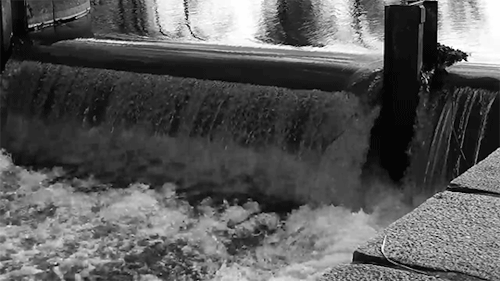Dams often use fish ladders to help migratory species make their way upstream without interruption. In this video, Grady from Practical Engineering discusses some of the considerations that go into this special infrastructure and what kinds of designs work for different species. The first challenge for any dam is attracting fish to the ladder, which is often done by regulating the water flow at the entrance to create the velocity and turbulence that fish look for when going upstream.
Once fish are in the ladder, they travel up a series of jumps that break the dam’s elevation into manageable steps. Different dams use various baffle designs to create jumps suited to their local species and the way they like to swim. Calmer spots in each section give fish a spot to rest before they carry on. In well-designed systems, the vast majority (97%!) of fish that enter a ladder make it through to the other side. (Video and image credit: Practical Engineering)




